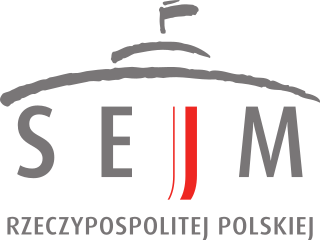
The Sejm, officially known as the Sejm of the Republic of Poland, is the lower house of the bicameral parliament of Poland.

The Polish–Lithuanian Commonwealth, formally known as the Kingdom of Poland and the Grand Duchy of Lithuania, or simply Poland–Lithuania, was a bi-confederal state, sometimes called a federation, of Poland and Lithuania ruled by a common monarch in real union, who was both King of Poland and Grand Duke of Lithuania. It was one of the largest and most populous countries of 16th- to 17th-century Europe. At its largest territorial extent, in the early 17th century, the Commonwealth covered almost 1,000,000 km2 (400,000 sq mi) and as of 1618 sustained a multi-ethnic population of almost 12 million. Polish and Latin were the two co-official languages, and Roman Catholicism served as the state religion.
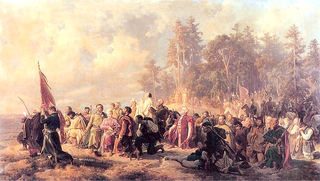
The Bar Confederation was an association of Polish–Lithuanian nobles (szlachta) formed at the fortress of Bar in Podolia, now Ukraine, in 1768 to defend the internal and external independence of the Polish–Lithuanian Commonwealth against Russian political influence and against King Stanislaus II Augustus with Polish reformers, who were attempting to limit the power of the Commonwealth's wealthy magnates.
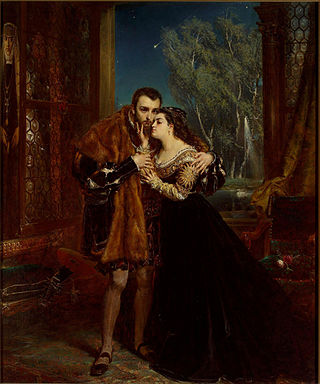
The Polish Golden Age was the Renaissance period in Poland and the Grand Duchy of Lithuania, roughly corresponding to the period of rule of the King Sigismund I the Old (1506–1548) and his son, Sigismund II Augustus, the last of the Jagiellonian Dynasty monarchs, until his death in 1572. Some historians argue that the Polish Golden Age continued into the mid-17th century, when the Polish–Lithuanian Commonwealth was ravaged by the Khmelnytsky Uprising (1648–57) and by the Swedish and Russian invasion. During its Golden Age, the Commonwealth became one of the largest kingdoms of Europe, stretching from modern Estonia in the north to Moldavia in the east and Bohemia in the west.

The Constitution of 3 May 1791, titled the Governance Act, was a constitution adopted by the Great Sejm for the Polish–Lithuanian Commonwealth, a dual monarchy comprising the Crown of the Kingdom of Poland and the Grand Duchy of Lithuania. The Constitution was designed to correct the Commonwealth's political flaws. It had been preceded by a period of agitation for—and gradual introduction of—reforms, beginning with the Convocation Sejm of 1764 and the ensuing election that year of Stanisław August Poniatowski, the Commonwealth's last king. It is the second constitution in history, after that of the United States.
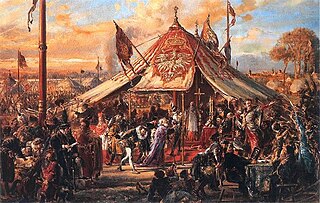
Golden Liberty, sometimes referred to as Golden Freedoms, Nobles' Democracy or Nobles' Commonwealth was a political system in the Kingdom of Poland and, after the Union of Lublin (1569), in the Polish–Lithuanian Commonwealth. Under that system, all nobles (szlachta), regardless of rank, economic status or their ethnic background were considered to have equal legal status and enjoyed extensive legal rights and privileges. The nobility controlled the legislature and the Commonwealth's elected king.

The liberum veto was a parliamentary device in the Polish–Lithuanian Commonwealth. It was a form of unanimity voting rule that allowed any member of the Sejm (legislature) to force an immediate end to the current session and to nullify any legislation that had already been passed at the session by shouting either Sisto activitatem! or Nie pozwalam!. The rule was in place from the mid-17th century to the late 18th century in the Sejm's parliamentary deliberations. It was based on the premise that since all of the Polish–Lithuanian noblemen were equal, every measure that came before the Sejm had to be passed unanimously. The liberum veto was a key part of the political system of the Commonwealth, strengthening democratic elements and checking royal power and went against the European-wide trend of having a strong executive.

A konfederacja was an ad hoc association formed by Polish–Lithuanian szlachta (nobility), clergy, cities, or military forces in the Polish–Lithuanian Commonwealth for the attainment of stated aims. A konfederacja often took the form of an armed rebellion aimed at redressing perceived abuses or trespasses of some authority. Such "confederations" acted in lieu of state authority or to force their demands upon that authority. They could be seen as a primary expression of direct democracy and right of revolution in the Commonwealth, and as a way for the nobles to act on their grievances and against the state's central authority.

The Targowica Confederation was a confederation established by Polish and Lithuanian magnates on 27 April 1792, in Saint Petersburg, with the backing of the Russian Empress Catherine II. The confederation opposed the Constitution of 3 May 1791 and fought in the Polish–Russian War of 1792, which led to the Second and Third Partitions of Poland.

Royal elections in Poland were the elections of individual kings, rather than dynasties, to the Polish throne. Based on traditions dating to the very beginning of the Polish statehood, strengthened during the Piast and Jagiellon dynasties, they reached their final form in the Polish–Lithuanian Commonwealth period between 1572 and 1791. The "free election" was abolished by the Constitution of 3 May 1791, which established a constitutional-parliamentary monarchy.
Mikołaj Sienicki of Bończa was a member of the nobility of the Kingdom of Poland. He held the office of chamberlain of the land of Chełm and was a notable politician of his period. Considered one of the best Polish political orators, he also held the title of marshal of the Sejm nine times. A Protestant, near the end of his life he became a member of the Polish Brethren and one of the major initiators of, and contributors to the Warsaw Confederation, which introduced new laws of religious tolerance in the Polish–Lithuanian Commonwealth, on a scale unimaginable in contemporary Europe.
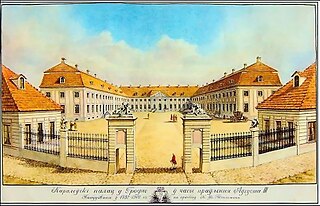
Grodno Sejm was the last Sejm of the Polish–Lithuanian Commonwealth. The Grodno Sejm, held in autumn 1793 in Grodno, Grand Duchy of Lithuania is infamous because its deputies, bribed or coerced by the Russian Empire, passed the act of Second Partition of Poland. The Sejm started on 17 June and ended on 23 November 1793. It ratified the division of the country in a futile attempt to prevent its subsequent complete annexation two years later in the 1795 Third Partition of Poland.

The 1632 free election in the Polish–Lithuanian Commonwealth commenced between September 27 and November 8, 1632. It then extended to November 13, 1632. The election sejm elevated Władysław IV to the Polish throne. Władysław had won the support of most of the political factions; and in the absence of any other serious contenders, he was elected King of Poland and Grand Duke of Lithuania.

The General Confederation of the Kingdom of Poland was a governing body of the Duchy of Warsaw created by Napoleon Bonaparte and the Polish political elite on the onset of Napoleon's campaign against Russia, which was proclaimed as "the second Polish war". It took the form of a confederated sejm (parliament). Officially assembled on the 28th of June, 1812, it oversaw the formal transformation of the Duchy of Warsaw into the "Kingdom of Poland".

The early modern era of Polish history follows the Late Middle Ages. Historians use the term early modern to refer to the period beginning in approximately 1500 AD and lasting until around 1800.

The free election of 1573 was the first ever royal election to be held in the Polish–Lithuanian Commonwealth. It gathered approximately 40,000 szlachta voters who elected Henry of Valois king.

The history of the Polish–Lithuanian Commonwealth (1569–1648) covers a period in the history of Poland and Lithuania, before their joint state was subjected to devastating wars in the mid-17th century. The Union of Lublin of 1569 established the Polish–Lithuanian Commonwealth, a more closely unified federal state, replacing the previously existing personal union of the two countries. The Union was largely run by the Polish and increasingly Polonized Lithuanian and Ruthenian nobility, through the system of the central parliament and local assemblies, but from 1573 led by elected kings. The formal rule of the nobility, which was a much greater proportion of the population than in other European countries, constituted a sophisticated early democratic system, in contrast to the absolute monarchies prevalent at that time in the rest of Europe.
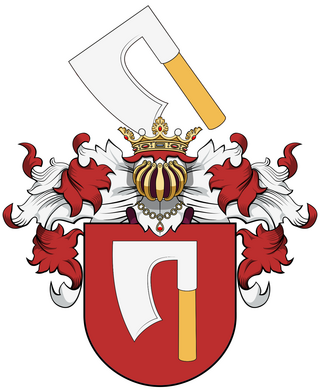
Hieronim Ossoliński,, coat of arms Topór, was a Polish statesman, kasztelan of Sandomierz and Wojnicz, a delegate to the Sejm of 1569 and one of the signatories of the Union of Lublin, which formally united Poland and Lithuania into the Polish–Lithuanian Commonwealth. Ossoliński was a Calvinist, and a leader of Protestants in the province of Małopolska during the reign of king Zygmunt August. Ossoliński was also one of the leaders of the Executionist movement, which sought to reform 16th century Polish politics.

The privileges of the szlachta formed a cornerstone of "Golden Liberty" in the Kingdom of Poland and, later, in the Polish–Lithuanian Commonwealth (1569-1795). Most szlachta privileges were obtained between the late-14th and early-16th centuries. By the end of that period, the szlachta had succeeded in garnering numerous rights, empowering themselves and limiting the powers of the elective Polish monarchy to an extent unprecedented elsewhere in Europe at the time.
The Counter-reformation in Poland was the response (Counter-Reformation) of Catholic Church in Poland to the spread of Protestantism in Poland. Counter-reformation in Poland lasted from the mid-16th century until the mid-18th century and ended with the victory of the Catholic Church, which succeeded in significantly reducing the influence of Protestantism in Poland.
















